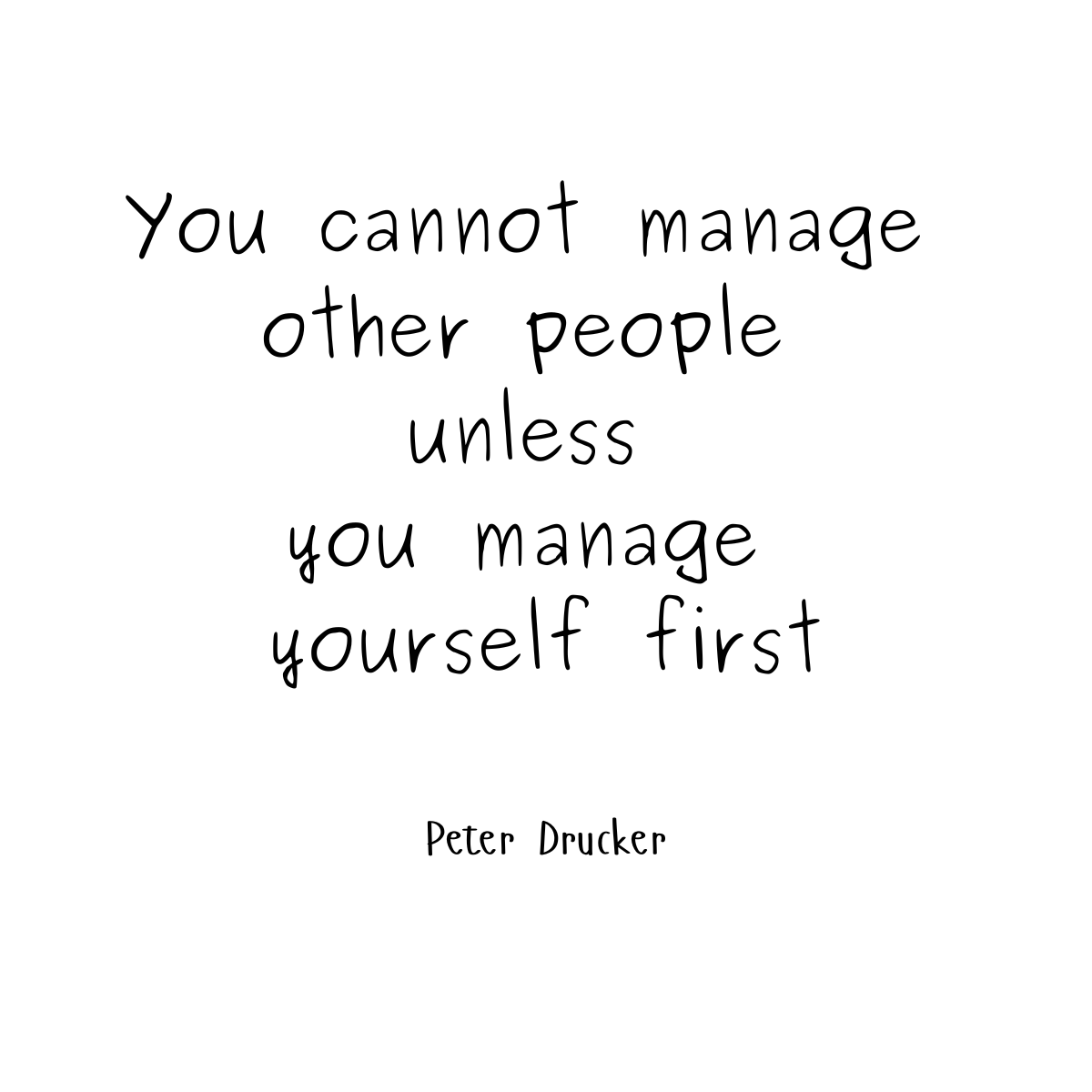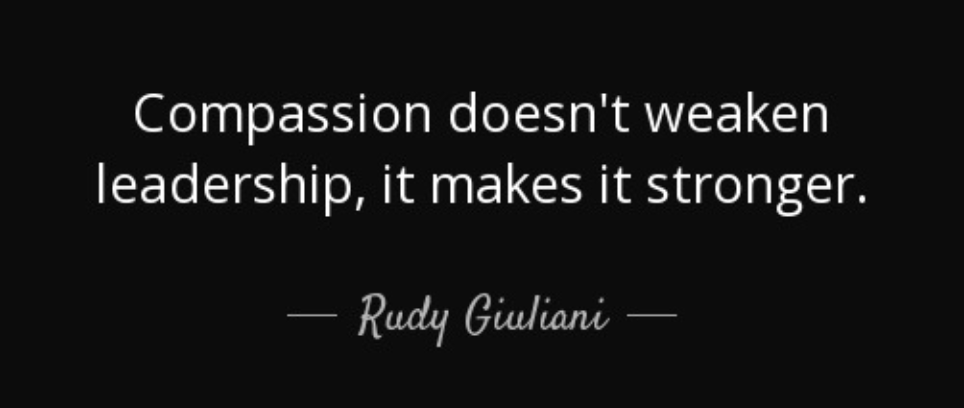
4 traits of a Mindful Leader– and why you need to be one
If you want to lower your stress levels and help yourself and your team be more productive, resilient, and operate with more ease and confidence at home and at work, mindfulness can be a useful tool in your leadership kit.
Research shows that leaders who practice mindfulness are more effective at managing stress and making decisions under pressure. They also have better relationships with their team members and are more attuned to the needs of their employees.
Ellen Langer, a respected mindfulness researcher, wrote in Harvard Business Review.
We find that mindfulness generates a more positive result. .... No matter what you’re doing—eating a sandwich, doing an interview, working on some gizmo, writing a report—you’re doing it mindfully or mindlessly. When it’s the former, it leaves an imprint on what you do. At the very highest levels of any field—Fortune 50 CEOs, the most impressive artists and musicians, the top athletes, the best teachers and mechanics—you’ll find mindful people, because that’s the only way to get there.
[Ellen Langer, https://hbr.org/2014/03/mindfulness-in-the-age-of-complexity]
It makes sense that organisations with more mindful leaders have higher levels of employee engagement, job satisfaction, and overall performance because mindful leaders are better equipped to handle workplace stressors and create a positive work environment for their employees.
Mindful leadership is a style of leadership that emphasises three things and adds one more. The first is awareness.
1 Awareness
Mindfulness trainings often suggest techniques to focus on the present moment and stay aware of what is happening in real-time. In the workplace, rumination on past mistakes or future events tends to be unproductive. Instead, cultivate an active awareness of your present circumstances and the environment while at work.
One way to do this is to take mindful moments each day to check in with yourself and your team, ensuring that everything is running smoothly. It can be all too easy to get lost in a screen, responding to emails, writing reports, creating presentations and lose connection to what is happening at a more subtle level around the office.
Trust your instincts - because you are familiar with your workplace and team dynamics, you are best positioned to identify any anomalies or issues. If something feels off, chances are there is a problem. For instance, if you notice a sudden cessation of frequent communication among your usually connected team members, be aware of the change and proactively intervene to provide support. Address any concerns promptly, especially if your team members start feeling overwhelmed, burnt out, or disengaged.
One unexpected benefit of mindfulness is that I've become a better listener. Rather than thinking of my response (or rebuttal), simply listening, fully and noticing my own internal dialogue has been an interesting experiment. I find that I am much better able to see the other person's perspective and be more thoughtful in my response. I can also create more spaciousness in the conversation because I'm not rushing or waiting to add my two cents.
2 Accountability
Recognising that team members are human and will make mistakes is essential. How you handle those mistakes and issues determines whether your team members can trust you in times of crisis. Create an environment where team members feel safe to report issues promptly, without fear of negative consequences.
If you can avoid the tendency to blame others when something goes wrong (a natural but counterproductive reaction) you can foster trust among your team by accepting that mistakes are inevitable, regardless of whether they are caused by team members, leaders, or true accidents. Instead of panicking or engaging in the blame game, focus on finding solutions.
” …when you’re upset about something—maybe someone turned in an assignment late, or didn’t do it the way you wanted—ask yourself, “Is it a tragedy or an inconvenience?” It’s probably the latter. Most of the things that get us upset are”.
https://hbr.org/2014/03/mindfulness-in-the-age-of-complexity
Remember, one mistake won't bring down the company, and addressing issues becomes easier when people aren't dwelling on blame. After taking accountability, focus on rectifying the situation and learning from it to improve future outcomes.
3 Compassion
Every single person working in an office, from C-suite executives to the admin staff, contributes to the success or otherwise of the company. Mindful leaders understand the importance of cultivating compassion for all team members. You have the power to create and shape the team's culture, and when you lead with compassion, team members are more likely to follow suit.

Perhaps you notice one of your team members' performances is slipping. They have been consistently late, their work quality has declined, and other team members have noticed some mistakes. You have an important presentation coming up, and you're unsure if you can rely on their work anymore. While it may be tempting to assign someone else to lead the presentation, this short-term solution is not helpful for anyone involved.
It takes compassion to take the time to discuss your concerns with your team member and genuinely listen to them and offer help.
Perhaps something is going on in their personal life that requires a flexible schedule or time off. Maybe they are feeling overwhelmed but are afraid to let anyone down, resulting in longer work hours while neglecting their own well-being.
In this case, assigning another team member to help may be a suitable solution, as long as you communicate transparently and acknowledge the need for role adjustments.
Be empathetic when they need your support and, whenever possible, be flexible to accommodate their needs. Being compassionate doesn't mean allowing people to take advantage of you, but rather stepping up as a leader to provide the necessary support for your team.
Make these check-ins and conversations proactive rather than reactive, and a regular occurrence within your team. Showing compassion to your team members creates a supportive environment without disregarding the power dynamic.
Remember to celebrate the good moments too! When your team members have something to celebrate, join in their joy and show appreciation for their accomplishments.
4 Personal mindfulness
Perhaps it goes without saying, but to be truly mindful, leaders need to walk the talk and be aware of their own, internal balance. Setting aside dedicated time throughout the day to check in with yourself and your body is helpful. If you tend to become engrossed in projects, consider setting an alarm on your phone or laptop to remind yourself to take regular breaks for hydration and stretching.
Or, if you frequently switch tasks rapidly, use a timer to focus on one task for a specific duration before transitioning to another. Walking meditations, being in nature or talking with a wise mentor or friend are all ways to tap into mindful awareness.
Mindfulness practices are personal and will vary for each individual. Build your own toolkit with practices that resonate with you. Self-awareness means discovering what works best for you, so don't rely solely on conventional wisdom. Experiment with different approaches and assess their impact on your work life. If something proves ineffective, explore alternative strategies.
In terms of personal awareness, Jody Michaels leadership coach and author of “Leading Lightly” (2022) says:
If you care about performance – the first thing I would want you to do is work on the inside out, I want you to start to become acutely aware of your thoughts, because it’s your thoughts and your moods that are systemically driving 90% of your behaviour and results. Why aren’t we playing in that 90% space? It doesn’t make any sense. There is a very good chance that you need to build this skill of self-awareness. Because 95% of people think they have insight, only 10 to 15% actually do.
By improving your awareness and implementing a structured mindfulness practice, you can create a more engaging and positive work environment for yourself and your team.
Creating opportunities to implement mindfulness in your workplace
You may also want to consider creating opportunities for your team members to cultivate mindfulness during their workday. Implementing mindfulness formally in the workplace might involve introducing mindfulness exercises or training programs that encourage employees to focus on the present moment, accept it without judgment, and release any negative thoughts or emotions.
Alternatively, you can simply provide them with a quiet space and the time and freedom to explore different mindfulness practices. h.
With the insistent invasive attention seeking that our technology can demand, t may seem ironic to suggest that technology can also promote mindfulness. However, recent research has shown that digital tools such as meditation apps, online courses, and virtual reality experiences can effectively guide individuals in their mindfulness practice. These tools, often available on your mobile phone, do provide accessibility and convenience, which allows anyone to incorporate mindfulness into their daily lives more easily. Some companies even offer subscriptions to apps like Calm or Headspace, as a tool to go alongside that weekly fruit box.
Such initiatives support the mental health of employees, fostering a more positive, supportive, and productive work environment.
([Implementing Mindfulness in the Workplace](https://www.mindfulleader.org/blog/33333-5-simple-mindfulness-practices-for-people-who-hate-to-meditate).
Mindfulness allows you to step outside of yourself and take responsibility for your own thoughts, ideas, and decisions, while also considering the well-being of your team members.
We believe it is not just another tool in your kit of leadership skills, but perhaps, the bedrock.
References
- King, E., & Haar, J. M. (2017). The Human Benefits of Mindful Leadership: An Exploratory Study of the Positive Psychological Effects. Human Resource Management Journal, 30(2), 141-157.
- Janssen, M., Heerkens, Y., Kuijer, W., Van Der Heijden, B., & Engels, J. (2018). Effects of Mindful Leadership on The Wellbeing and Job Performance of Employees: A Systematic Review. Journal of Business Ethics, 159(3), 895-908.
- Good, D., Lyddy, J., Glomb, T. M., Bono, J. E., Brown, K. W., Duffy, M. K., Baer, R. A., Brewer, J. A., & Lazar, S. W. (2016). Contemplating Mindfulness at Work: An Integrative Review. Journal of Management, 42(1), 114-142.
- Reb, J., Narayanan, J., & Chaturvedi, S. (2012). Leading Mindfully: Two Studies on The Influence of Supervisor Trait Mindfulness on Employee Well-Being and Performance. Mindfulness, 9(1), 36-45.
- Brown, K. W., & Ryan, R. M. (2003). The benefits of being present: Mindfulness and its role in psychological well-being. Journal of Personality and Social Psychology, 84(4), 822–848.
- Hülsheger, U. R., Alberts, H. J., Feinholdt, A., & Lang, J. W. (2013). Benefits of mindfulness at work: The role of mindfulness in emotion regulation, emotional exhaustion, and job satisfaction. Journal of Applied Psychology, 98(2), 310.
- Dane, E., & Brummel, B. J. (2014). Examining workplace mindfulness and its relations to job performance and turnover intention. Human Relations, 67(1), 105–128.
- Reb, J., Narayanan, J., & Chaturvedi, S. (2014). Leading mindfully: Two studies on the influence of supervisor trait mindfulness on employee well-being and performance. Mindfulness, 5(1), 36–45.